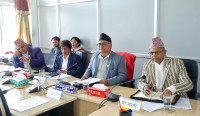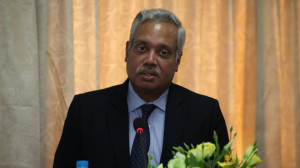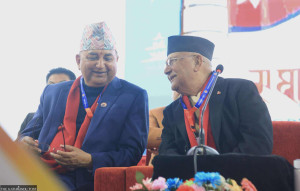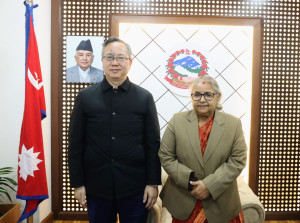National
Nepali officials to inspect Indian ports
Senior officials from the Ministry of Commence are leaving for India on Monday to inspect Indian ports that Nepal has been using for imports and exports of goods.
Senior officials from the Ministry of Commence are leaving for India on Monday to inspect Indian ports that Nepal has been using for imports and exports of goods.
Secretary at the Ministry of Commerce Chandra Ghimire is leading the Nepali delegation to ports in Calcutta and Visakhapatnam through which Nepal is importing and exporting goods.
The Nepali delegation is also schedule to visit Dhamra Port in Odissa, a new port that the Indian government has been urging Nepal to use it for trading with third countries. “The Indian side had proposed the Dhamra port to us but we have yet to take a decision,” said Ravi Shankar Saiju, joint secretary at the Ministry of Commerce.
“If we find it convenient, we will table a formal proposal during the upcoming secretary-level meeting of Inter Government Committee on trade and commerce,” he said.
Apart from visiting Dharma Port, the Nepali delegation will also look into problems facing the Nepali business community while exporting and importing goods in container. The two sides will also discuss in detail about the electronic cargo tracking system (ECTS) that was recently introduced on Nepal-bound cargo from India.
The ECTS supposed to help facilitate safe and secure cross-border transit, simplify border formalities and procedures, reduce congestion of cargo, improve transit time, and lessen transaction cost.
The ECTS was introduced in Nepal-bound cargo by the Ministry of Commerce as a pilot project with support of the Asian Development Bank. Earlier, the Nepal-bound cargo had to be cleared after physical inspection which was both time-consuming and more expensive.
The new modality includes use of the ECTS to follow the cargo (containers and full-body trucks) as it moves from the port of arrival through India to the Nepal border. “The ECTS will lead to reduced cost and time as it speeds up cargo clearance at border crossings,” the ministry said.
Some of the Nepal-bound cargos from Calcutta and Visakhapatnam are using the ECTS. It uses technology such as satellite positioning systems, cellular communications, radio frequency (RF) identification, web-based software and others, to ensure the security of cargo and avoid any interference in transit.
In doing so, traders will reduce the cost and time spent for clearing cargos at border crossings. India and Nepal will pilot the tracking system for Nepal-bound cargos by road and rail along Kolkata-Birgunj via Raxaul, Sirsiya Dry Port via Raxaul, Kolkata-Biratnagar via Jogbani, and Kolkata-Bhairahawa via Sunauli trading points.




 18.12°C Kathmandu
18.12°C Kathmandu

.jpg&w=200&height=120)












